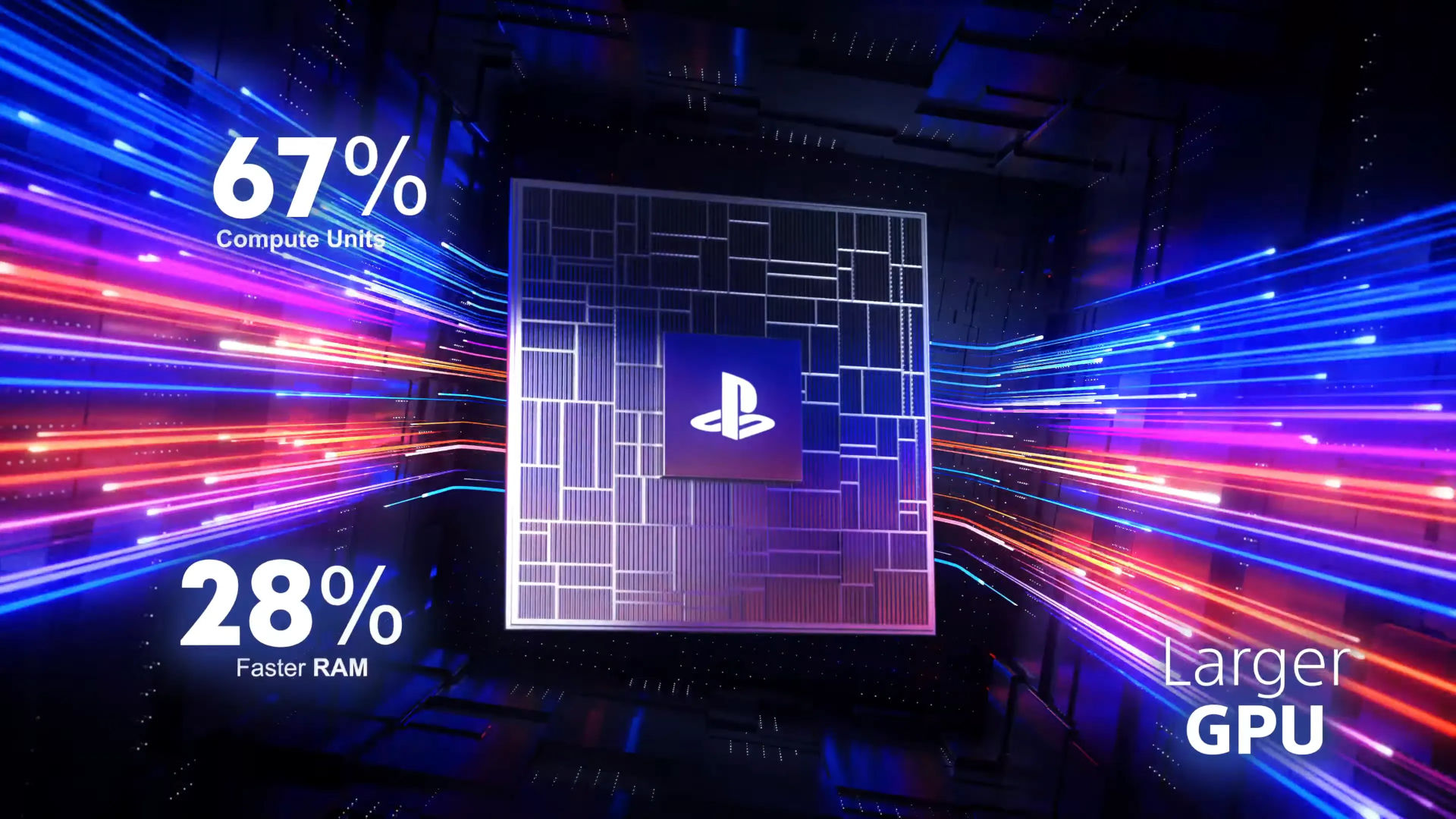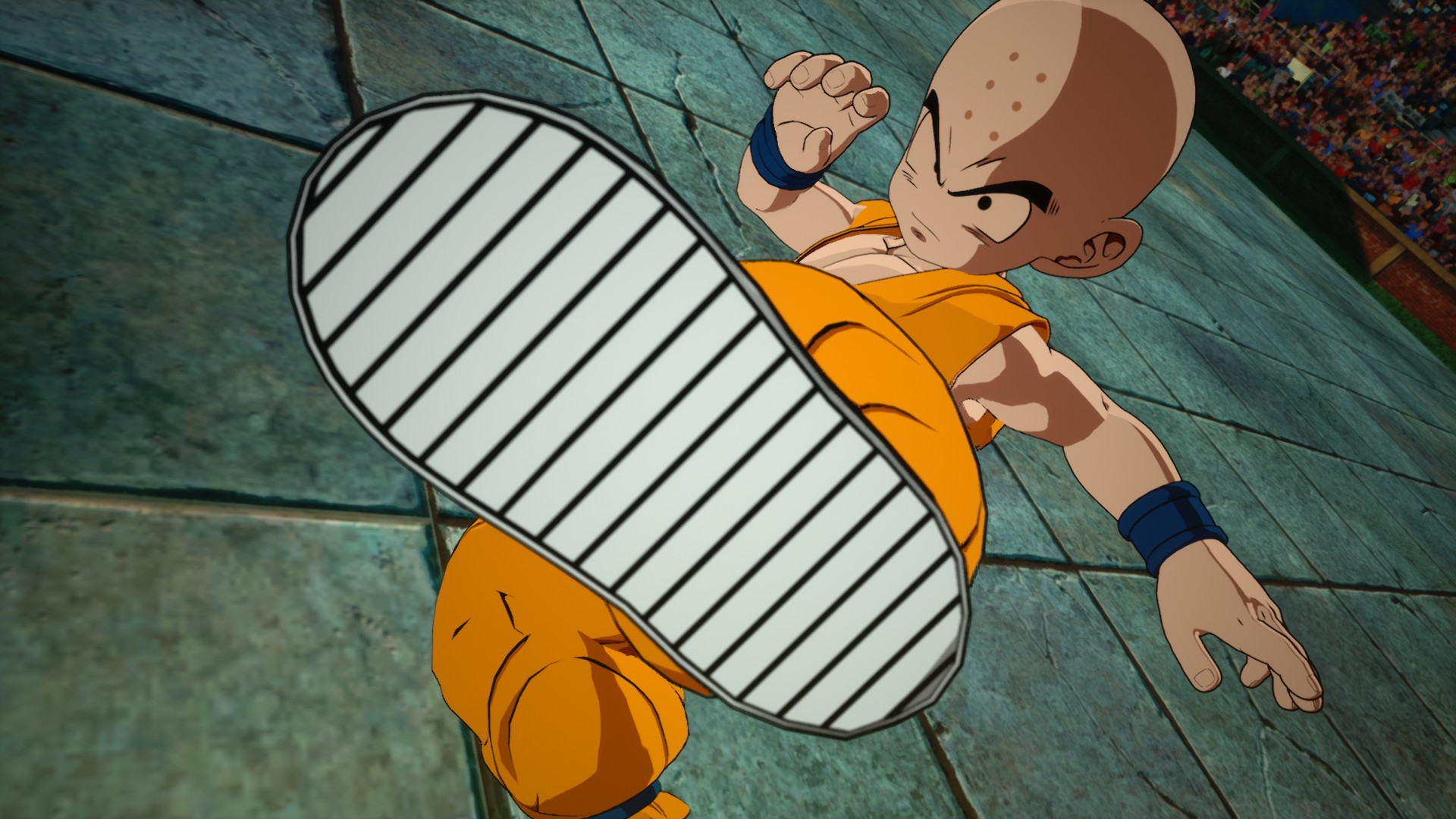
It was billed as merely being a ‘Sony technical presentation’ focusing on the PlayStation 5 and “innovations in gaming technology,” but with all the rumours building up over the months, we all knew what it was going to be about and it didn’t disappoint. Mark Cerny, the lead architect of the PS5, spent 10 minutes spilling some of the details about the PS5 Pro.
Front and center in the updated console is a new custom APU, designed by AMD and Sony, and manufactured by TSMC. The CPU part of the chip is still the same eight-core, 16-thread Zen 2 design, as having a much more powerful CPU messes up current and backward compatibility, so nobody was expecting any changes there.
However, big things were expected of the GPU and true to the rumours, it’s a much beefier affair. Where the PlayStation 5 has an RDNA 2-based graphics processor, with 36 compute units and 16 GB of 14 Gbps GDDR6, the Pro wades in with 60 compute units (almost certainly RDNA 3-based) and 18 Gbps GDDR6. Exact clock speeds haven’t been announced yet but given the size of the chip, they’re likely to be a bit lower.
Along with the normal RDNA 3 features, the PS5 Pro GPU also has improved ray tracing units (Cerny said “two or three times faster” but take that with a pinch of salt) and then there’s PlayStation Spectral Super Resolution Upscaling (PSSR), which is an AI-accelerated upscaler, akin to DLSS and XeSS. Earlier rumours also claimed the new GPU has full hardware support for mesh shaders and variable rate shading, making the chip on par with today’s PC graphics cards.
Taking all of that on board, one is clearly left with a serious powerful games console. Those 60 compute units might not be clocked as high as the 60 in the Radeon RX 7800 XT but it’s one heck of an increase over the original PS5. However, I don’t think there will be any L3 Infinity Cache to ease the load on the VRAM, so that modest increase in memory bandwidth is going to be quite a performance limit in some cases. For sheer compute work, though, it’ll be a monster.
So console gamers get a lovely new machine to buy (provided they’re willing to cough up the steep $700 price, of course) but does the launch of the PS5 Pro mean anything for PC gaming? On face value, the answer would seem to be no, as the number of units that Sony will sell is going to be tiny in comparison to the millions of PS5s it’s already shifted.
Few game developers, if any, are going to make a game just for the PS5 Pro but many of the bigger studios are adding something special for the Pro, either in the form of more performance or just better graphics.
And since Sony is dead keen on porting its best-selling PlayStation games to the humble PC, having one that uses the same technology that’s already supported by your Arc, GeForce, or Radeon graphics card means that you’re not going to be missing out on anything by sticking with a PC.
Consoles have been very PC-like since the Xbox One and PlayStation 4, and the PS5 Pro just reinforces that direction. The cost of developing a major game is so high now that few publishers are going to completely ignore the PC, with the odd exception here and there.
Don’t get me wrong, I’d love to have a PS5 Pro, just to play some of my favourite PlayStation games at their full glory but I’m not going to cough up that kind of money, when (a) I already have a PS5 and (b) I’ve got a gaming PC that’s far more capable and versatile than the Pro. But as a total GPU-nerd, I have to say I can’t wait to see the full details of the new chip.



